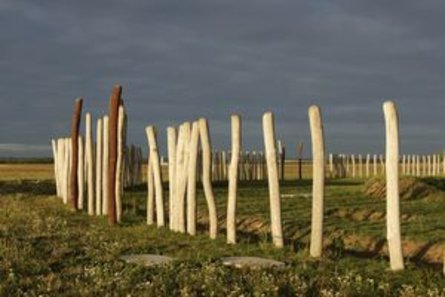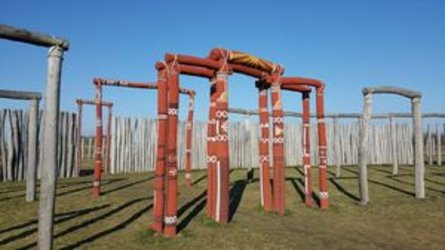
Pömmelte Woodhenge was discovered in 1991 by aerial photography. From 2005 to 2008 researchers of the Martin Luther University Halle-Wittenberg and the State Office for Heritage Management and Archaeology studied the complex. During this research, the circular sanctuary was completely excavated.

The complex structure consists of various wooden palisade rings, pits, and earthworks. At the end of the Stone Age and the beginning of the Bronze Age, the 115 metre complex was used as a central sanctuary. This is testified by sacrificial pits and ritual depositions. Drinking vessels, animal bones, quern stones, stone axes, and parts of human bodies were discovered. Astronomical aspects also shaped the construction of the complex.
The Woodhenge was abandoned around 2,050 BC. The people of the Bronze Age, however, did not simply let the place of worship fall into ruin. As part of a sacrificial ceremony, all posts were removed from the ground and burnt in a large fire.

In the Pömmelte Woodhenge seasonal festivals were celebrated. At the same time it served as a burial site and place of sacrifice. The archaeological finds tell of a vivid world of ritual and ancestry.
The two main entrances to the enclosure are oriented towards the points of sunrise and sunset of the days between the solstices and the equinoxes. In its orientation the henge marked the seasons, the harvest season, and festivals of the dead and at New Year. In the rondel the individual phases of the seasonal cycle were observed.